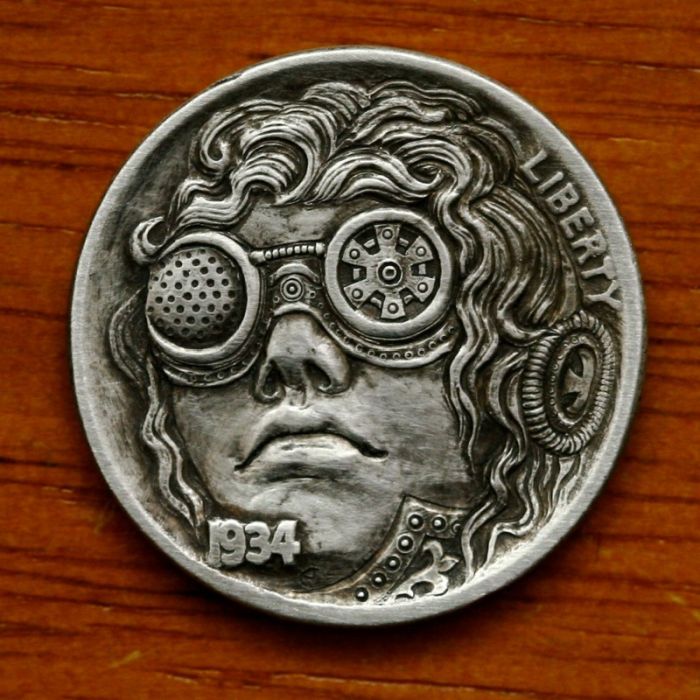|
|
Hobo Nickel Art Coin
|
When the Indian Head, or Buffalo nickel, was introduced in 1913, it became popular among coin engravers. The big Indian head was a radical departure from previous designs and would not be seen on any subsequent coins. The large, thick profile gave the artists a larger template to work on and allowed for finer detail.
On earlier coins, the head was much smaller in relation to the size of the coin. For example, on a Lincoln cent, the head covers about one-sixth of the area. On the Buffalo nickel, the Indian's head occupies about five-sixths of the area. Moreover, the nickel is a larger coin. Large heads also adorn the Morgan dollar and the Columbian half dollar commemoratives of 1892-93, but these coins were rarely altered due to their high value.
Another factor contributing to the Buffalo nickel's popularity was the sex of the subject. Nearly all previous coins had depicted women (Liberty head nickels, Indian head cents, Barber and Morgan silver dollars). A male head has larger, coarser features (nose, chin, brow) that can be altered in many ways. Even the buffalo on the reverse could be changed into another animal or a man with a backpack.
|
|









